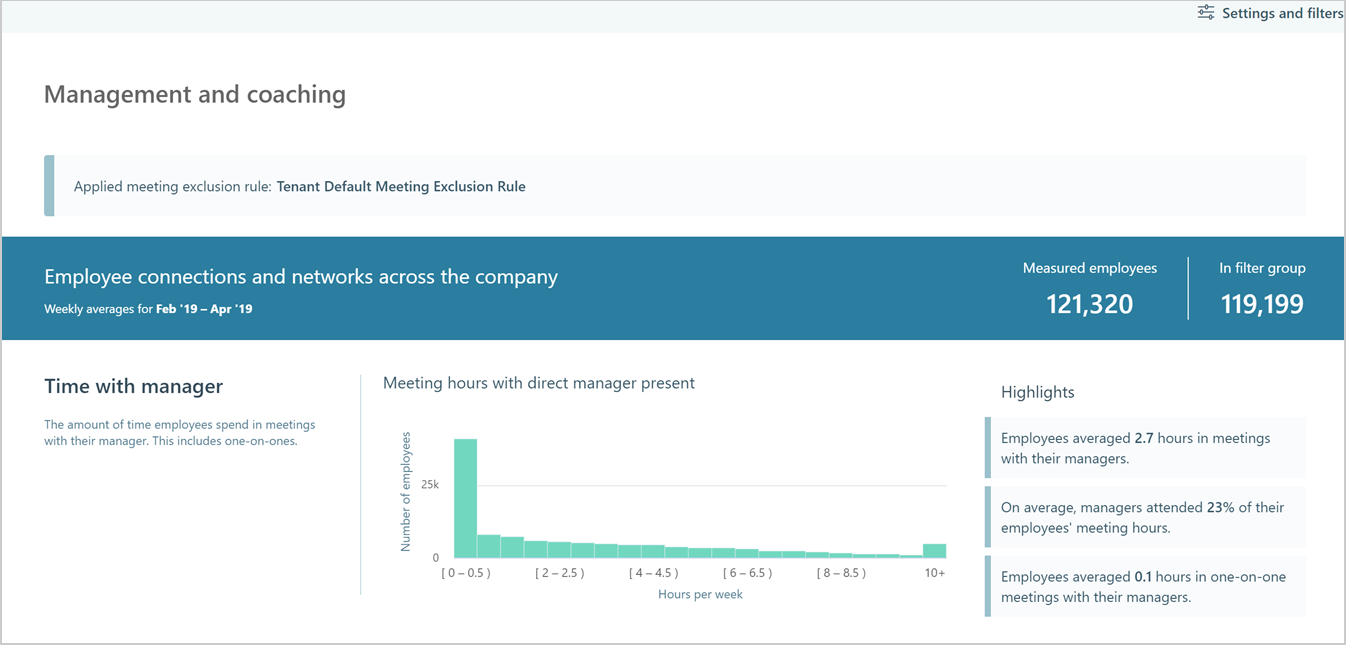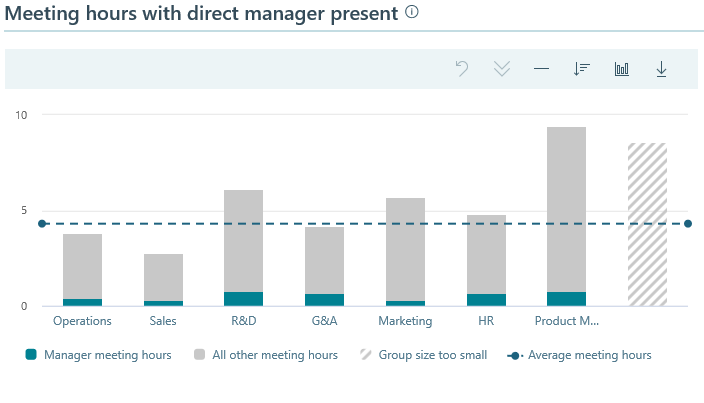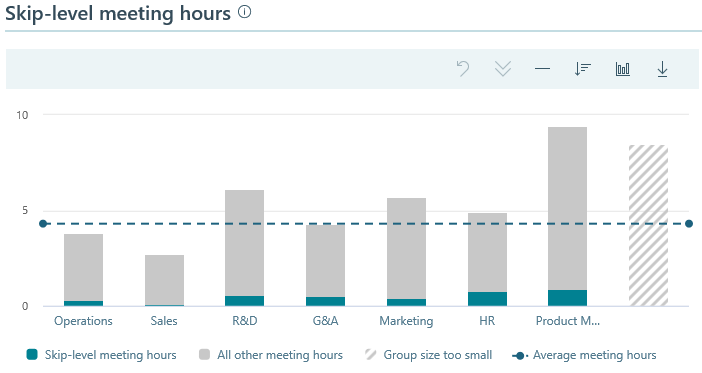Management and coaching
Important
This article is for the legacy Workplace Analytics app and does not reflect functionality available on the updated Viva Insights platform. Access current documentation for Viva Insights advanced insights here: advanced insights documentation.
Management and coaching summarizes collaboration between leaders, managers, and employees. As an analyst, you can use this section to gain insight into relationships between employees and their manager and other leaders. Time with leaders and managers is often a key factor of employee engagement. By using these metrics, analysts can begin to classify groups of employees as micromanaged or independent, and over-coached or under-coached. Employees who sent at least one email or instant message during a week are considered active and are included in the data for the weeks they are active.

Access to Management and coaching
Management and coaching data is available through the recommendations within See your insights in the Take action section of a relevant behavior. Or you can open Management and coaching(if that link doesn't work, try this link instead) to view it in Advanced insights.
Time with manager
The Time with manager histogram compares how much time employees spend in meetings with their manager on average each week.

Why it’s important
Seeing the distribution of time employees spend with managers enables you to identify the central tendency, variation, and outliers. Long tails and multiple peaks can identify areas to perform deeper analysis. The amount of time that an employee spends with their manager can indicate positive and negative behaviors.
- Higher time with manager can indicate a good coaching and development culture where managers are focused on developing their employees.
- A very high proportion of time in meetings with manager can indicate a culture of micro-management or lack of trust.
- Too little time spent with managers in meetings potentially suggest insufficient team guidance, particularly for newly onboarded employees.
- Further analysis can reveal how time with manager compares by employee tenure, job role, or employee satisfaction to provide insights to determine if there are opportunities for improvement in this area.
1:1 meeting hours
1:1 meeting hours shows the time employees spend with their direct manager where they are the only two people in the meeting.

Depending on roles, it can be important for employees to have time with their manager on a regular basis to encourage open communication, feedback cycles, and opportunities for growth. Data can reveal inconsistencies in how managers collaborate with their teams and whether leaders and managers are available to their employees.
Why it’s important
- Manager 1:1 meetings are critical to employee development, and if ignored, can lead to employee disengagement and ultimately to attrition.
- A minimum of one hour per month (roughly 30 minutes every 2 weeks) is a good rule of thumb for managers and their direct reports.
- Consistently low manager hours might be a signal of poor people management.
Meeting hours with direct manager present
Meeting hours with direct manager present shows the time employees spend in meetings that their manager is also attending.

Why it’s important
The level of day-to-day collaboration between managers and their employees can indicate whether employees feel empowered to take initiative and work independently, or if they struggle to separate themselves from their manager.
- A very high proportion of time spent in meetings with managers suggests micro-management.
- Too little time spent with managers in meetings potentially suggests insufficient team guidance, particularly for new employees.
Skip-level meeting hours
Skip-level meeting hours shows the time that employees spend in meetings where their manager's manager is present.

Depending on roles, it can be important for employees to have time to meet with their skip-level manager to encourage transparency, feedback, and opportunities for growth. Data can reveal if teams have little visibility to leaders in the company, or conversely, consistently collaborate with upper-level managers.
Why it’s important
- Having opportunities to meet with skip-level managers is important for employees to feel they have good visibility and understanding of how their work fits into larger organizational goals. These meetings also provide good opportunities for employee growth and career development.
- Employees who don't often meet with their skip-level managers might feel disconnected or disengaged.